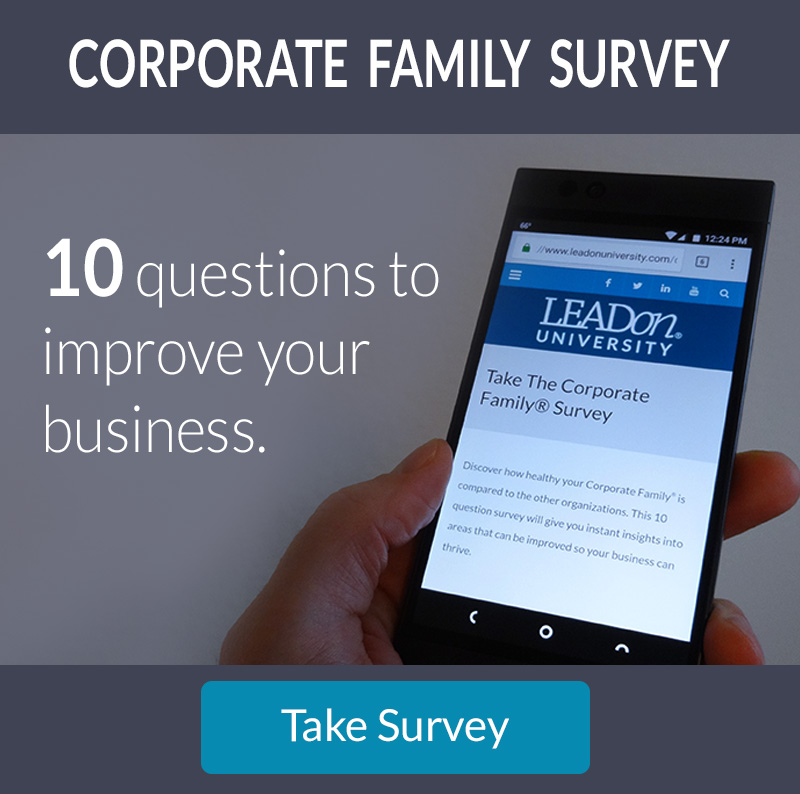
Caring for Your Corporate Culture
Store Purpose: To create an uplifting and delightful experience for everyone that walks through our doors!!
Posted at an El Cajon, California coffee shop
Upon reading the words displayed just inside a local coffee establishment, the average customer would expect a thoroughly enjoyable experience from start to finish. Unfortunately, the bright interior and exhilarating aroma of freshly ground beans were as close as this store came to fulfilling its proposed purpose. Wy? For starters, none of the six team members greeted individuals as they entered. After waiting several minutes at the counter, two customers were finally approached by an employee who seemed bothered about having to interact with them. As if this less-than-delightful experience weren’t bad enough, those two individuals joined a half-dozen others who were waiting for their coffee orders which were long overdue.
Luckily, the LEADon® team members who watched this astonishing scene hadn’t read the store’s purpose until exiting the building (after a long wait for their coffees which, perhaps not too surprisingly, were served sans smile). The stark contrast between the pleasing signage and the unpleasant store experience caused one of them to snap a picture to make certain they hadn’t misinterpreted this Corporate Family’s® intentions—which were even emphasized by a pair of exclamation marks at the end of the message! But our team members weren’t wrong: there was a distinct disconnect between the mission statement (store’s purpose) and its execution with valued clientele.
To be more precise, that coffee store and its respective representatives failed in one of three fundamental pillars that comprise culture: Behavior Patterns. Before we dive deeper into this topic, let’s take a look at each of those cultural pillars:
- Values: the principles, goals, or standards held and accepted by a group of people
- Beliefs: statements or virtues that people accept as true
- Behavior Patterns: specific actions that relay general character, state of mind, or response to circumstances
Every organization has a particular culture, so this means every company has its own unique set of Values, Beliefs, and Behavior Patterns. Healthy organizations will have all of these pillars clearly defined. They also carefully cascade that culture so that Corporate Family members embrace the culture and their clientele experience it. In addition, these organizations understand that Behavior Patterns are the most critical of the three cultural pillars because, unlike ideas (Values) and ideals (Beliefs) about their business, actions are what speak the loudest to colleagues and customers alike.
In the case of the aforementioned coffee shop, someone (perhaps the leader) had taken time to enthusiastically post what everyone was supposed to “value” and “believe” about their organization. Sadly, especially for customers, the Behavior Patterns exhibited by those six employees that day fell far short of achieving the alleged purpose for being in business.
In The Leading Edge: 9 Strategies for Improving Internal and Intentional Leadership (Wilke & Wilke, 2019), we explain how culture is vital to any Corporate Family’s long-term success. We also detail why it’s essential that every leader become a “cultural translator”—someone who not only helps create the organizational Values and Beliefs but also cascades the expected Behavior Patterns and holds every team member accountable to their Corporate Family culture.
As an exceptional leader, you’ll need other “cultural translators” to assist you in this inculcating process, especially as your company increases in size and influence. At LEADon, we’ve developed resources to help you and fellow team members in this culture-development process. For instance, one of our online courses entitled Corporate Culture’s Bottom Line Impact on Your Corporate Family® discusses the three pillars and details specific strategies you and your Corporate Family can implement to strengthen your company’s culture.
This intentional process is critical for leaders to consider because as LEADon contends, if you don’t define your culture, the “culture” will define you. In other words, without specified Values, Beliefs, and Behavior Patterns, other cultural elements will seep in and fill any voids. Striving to improve all three of these cultural pillars will have manifold benefits: “Companies with strong corporate cultures tend to be more productive and profitable, and they are the ones that often achieve organizational dynasty status” (see Wilke & Wilke’s book Corporate Family Matters, 2010, p. 37).
As a leader, you probably hope “to create an uplifting and delightful environment” for your Corporate Family members and clientele along with other goals you’d like to achieve. Yet in order to reach those goals, you must intestinally care for your Corporate Family’s culture. The team at LEADon has spent decades helping leaders like you cultivate strong, viable cultures, and we’re more than happy to discuss your organization’s specific needs at any time. Please contact us at 858.592.0700 or www.LEADonUniversity.com.
